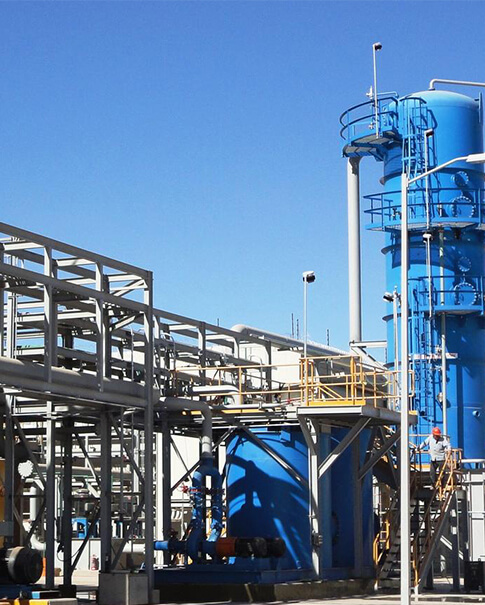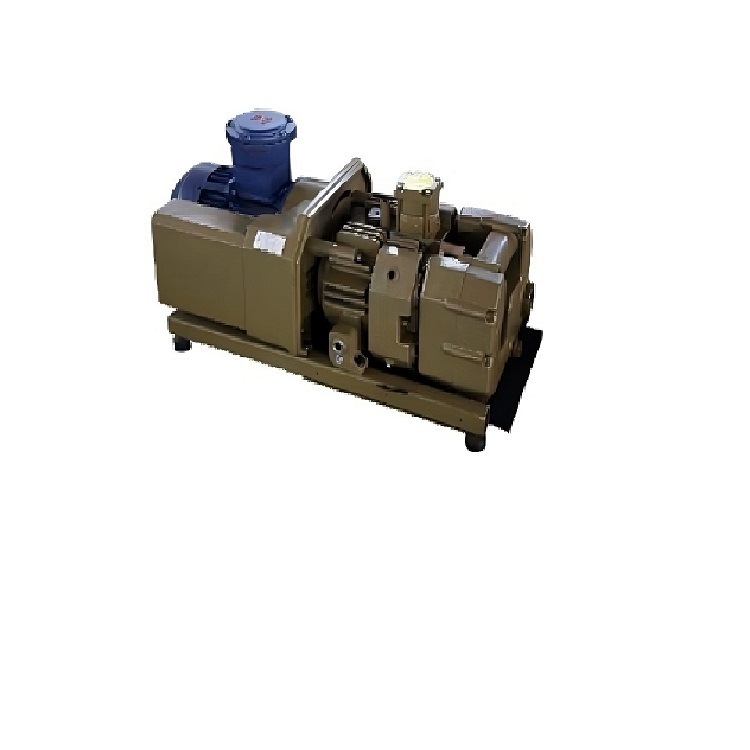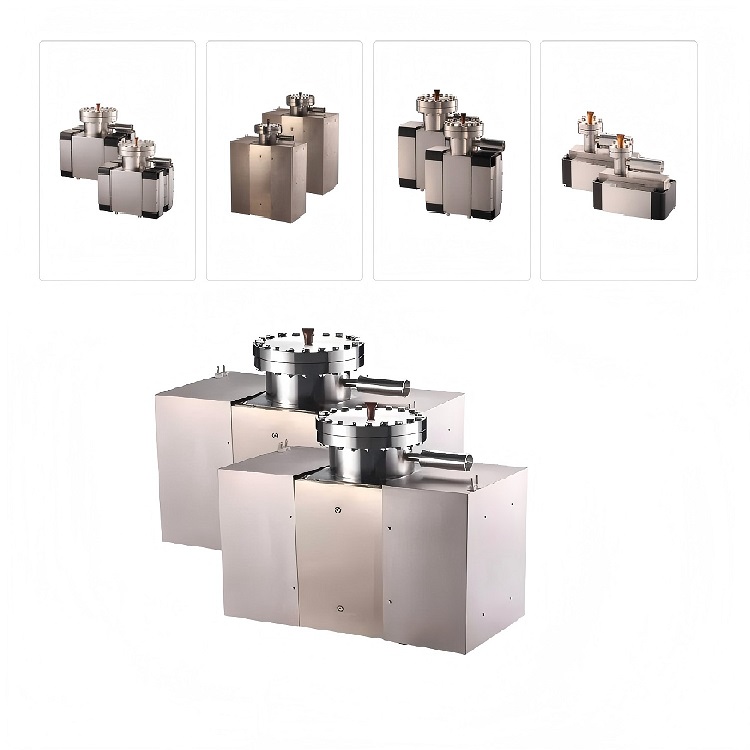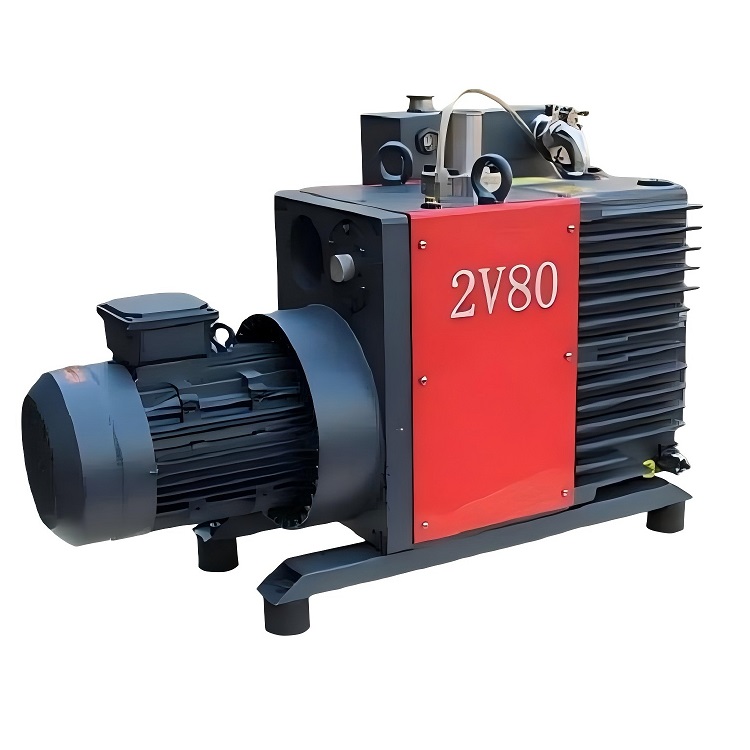Common terms for vacuum pumps
Jul 29, 2024
1, the definition of the vacuum
Vacuum system refers to the state of thin book gas below the atmospheric pressure in the area
2. Vacuum
The degree of gas scarcity in vacuum is usually expressed by "high vacuum" and "low vacuum". High vacuum means vacuum "good", low vacuum means vacuum "poor".
3, the vacuum degree unit
Usually use (Torr) as the unit, in recent years the international use (Pa) as the unit.
1 carrier =1 / 760 atmosphere =1 mmHg
4. Conversion of tuo and Pa
1 Tuo = 133.32 Pa or 1 Pa =7.510-3support from under
5, the average free course
The mean distance of the gas particle, flown in two successive collisions, is expressed by the symbol "λ".
6.Flow
The amount of gas flowing through any section per time, marked by "Q" in Pa · liter / second (Pa · L/s) or Tuo · liter / second (Torr · L/s).
7.Flow guide
Represents the ability of the vacuum tube to pass through the gas. In liter / second (L/s), where the pipeline flow guide is equal to the pipeline flow rate divided by the pressure difference between the two ends of the pipe. The symbol is "U".U=Q/(P2- P1)
8. Pressure or pressure
The force of the gas molecule acting on the unit area of the vessel wall is indicated by the "P".
9, Standard atmospheric pressure
The pressure is the pressure of 101325 per cm 2, symbol: (Atm).
10, * limit vacuum
After the vacuum vessel is fully pumped, it is stabilized at a certain vacuum degree, which is called * limit vacuum. Usually, the vacuum vessel must be 12 hours of gas refining and then vacuum for 12 hours. * One hour is measured every 10 minutes, and the average value of 10 times is taken as * limit vacuum value.
11. Pump the gas rate
At a certain pressure and temperature, the gas pumped away by the pump inlet per unit time is called the pumping rate, hereinafter referred to as the pumping speed.approach Sp=Q/(P-P0)
12, Hot even vacuum meter
The vacuum meter measures the vacuum degree by using that the potential of the thermocouple is related to the temperature of the heating element, and the temperature of the element is related to the thermal conduction of the gas.
13, ionizing vacuum meter (and heat Yin * ionization meter)
Made of cylindrical collection *, grid and a filament located in the center of the grid, cylindrical collection * outside the grid. Hot Yin * emits electrons to ionize the gas molecules, the ions are collected * collected, and the vacuum gauge measures the gas pressure according to the size of the collected ion-flow.
14, the composite vacuum meter
It consists of a hot couple vacuum meter and a hot Yin * ionizing vacuum meter, measuring from the atmosphere ~10-5Pa。
15, cold Yin * ionization meter
There are a pair of Yin plates at both ends of the Yang cylinder. Under the action of external magnetic field, the panning discharge is formed to produce ions. According to the size of the ion flow collected by the Yang plate.
16. Resistance vacuum meter (Pirani vacuum meter)
A vacuum meter in which the resistance of the heating element is related to the temperature, and the temperature of the element is related to the gas conduction is measured through a bridge circuit.
17. McCraw vacuum meter (compressed vacuum meter)
The gas to be measured is compressed with mercury (or oil) into a small volume, and then the liquid column difference between the open tube and the closed tube is compared, and a vacuum gauge is directly calculated directly by using Boyle's law.
18, and the gauge B-A
This is a Yin * with collecting * inverted hot Yin * ionization gauge. Collection * is a filament, placed in the center of the grid, with the filament placed outside of the grid, thus reducing the impact of soft X-rays, extending the lower measurement limit, and measuring ultra-high vacuum.
19. Water ring vacuum pump
The impeller rotor of the pump rotates the water ring. A mechanical vacuum pump that periodically changes the volume between the water ring and the blade due to the eccentric rotation of the rotor.
20, reciprocating vacuum pump
A mechanical vacuum pump pumping using the reciprocating movement of the piston.
21, oil seal mechanical vacuum pump
The mechanical vacuum pump that uses oil to maintain the seal can be divided into fixed plate type, rotary plate type, sliding valve type, residual cycloid line type, etc.
22, the Roots vacuum pump
Mechanical vacuum pump with a pair of synchronous high-speed rotating sole rotor, this pump can not be pumped separately, the front stage should be equipped with oil seal, water ring and other vacuum pump can be discharged straight into the atmosphere.
23, the turbomolecular vacuum pump
There is a high-speed rotating impeller, when the gas molecules collide with the high-speed rotating turbine blade is driven to the outlet and then removed by the front pump.
24.Oil diffusion vacuum pump
High-speed steam flow is ejected from the diffusion pump nozzle. Under the condition of molecular flow, the gas molecules continuously diffuse into the vapor flow, and are compressed by the steam belt to the pump outlet and then excluded by the front pump.
25, low-temperature vacuum pump
A vacuum pump below 20K.
26. Cold trap (water-cold baffle)
Set between a vacuum vessel and pump for gas or oil vapor.
27.Gas town valve
Oil seal mechanical vacuum pump in the compression chamber, and install the regulating valve, when open the valve and adjust the gas, the rotor to a certain position, the air through the hole into the compression chamber to reduce the compression ratio, so that most of the steam condensation and mixed with the gas is excluded from the pump of the valve is called gas valve.
28, vacuum freeze-drying
Vacuum freeze-drying, also known as sublimation-drying. The principle is to freeze the material to turn the water into ice, and then sublimate the ice under a vacuum to dry it out.
29, vacuum evaporation
In a vacuum environment, the material is heated and plated on the substrate is called vacuum evaporation, or vacuum coating.
30, vacuum drying
The method of drying articles by using the characteristic of low boiling point in a vacuum environment.
31. Common name of the vacuum system
(1) Main pump: in the vacuum system, the vacuum pump is used to obtain the required vacuum degree to meet the requirements of the specific process, such as the oil diffusion pump in the vacuum coating machine is the main pump.
(2) Front pump: a vacuum pump used to maintain the front pressure of a vacuum pump that is lower than its critical front pressure. Such as the rots pump front configuration of the rotary plate or slide valve pump is the front pump.
(3) Crude pumping pump: pump air from atmospheric pressure and pump the system pressure to another vacuum pump. Such as the vacuum coating machine in the sliding valve pump, is the crude oil pump.
(4) Maintenance pump: in the vacuum system, the gas volume is very small, can not effectively use the front pump. For this purpose, a less capacity auxiliary pump is configured to maintain the main pump, which is called maintenance pump. Such as the diffusion pump outlet with a small rotary plate pump, is to maintain the pump.

 Claw Vacuum Pump: An Efficient and Energy-Saving Industrial Solution
Jul 09, 2025
Claw Vacuum Pump: An Efficient and Energy-Saving Industrial Solution
Jul 09, 2025
 The Ultimate Guide to 2BV Series Liquid Ring Vacuum Pumps: Complete Analysis of Selection, Application, and Maintenance
Jul 08, 2025
The Ultimate Guide to 2BV Series Liquid Ring Vacuum Pumps: Complete Analysis of Selection, Application, and Maintenance
Jul 08, 2025
 7KV Starcell Ion Pump 2L-200B Ultimate Guide: The Premier Solution for Ultra-High Vacuum Applications
Jul 16, 2025
7KV Starcell Ion Pump 2L-200B Ultimate Guide: The Premier Solution for Ultra-High Vacuum Applications
Jul 16, 2025
 Tx2V80 Two-Stage Oil Rotary Vane Vacuum Pump | High-Performance Industrial Vacuum Solution
Jul 25, 2025
Tx2V80 Two-Stage Oil Rotary Vane Vacuum Pump | High-Performance Industrial Vacuum Solution
Jul 25, 2025